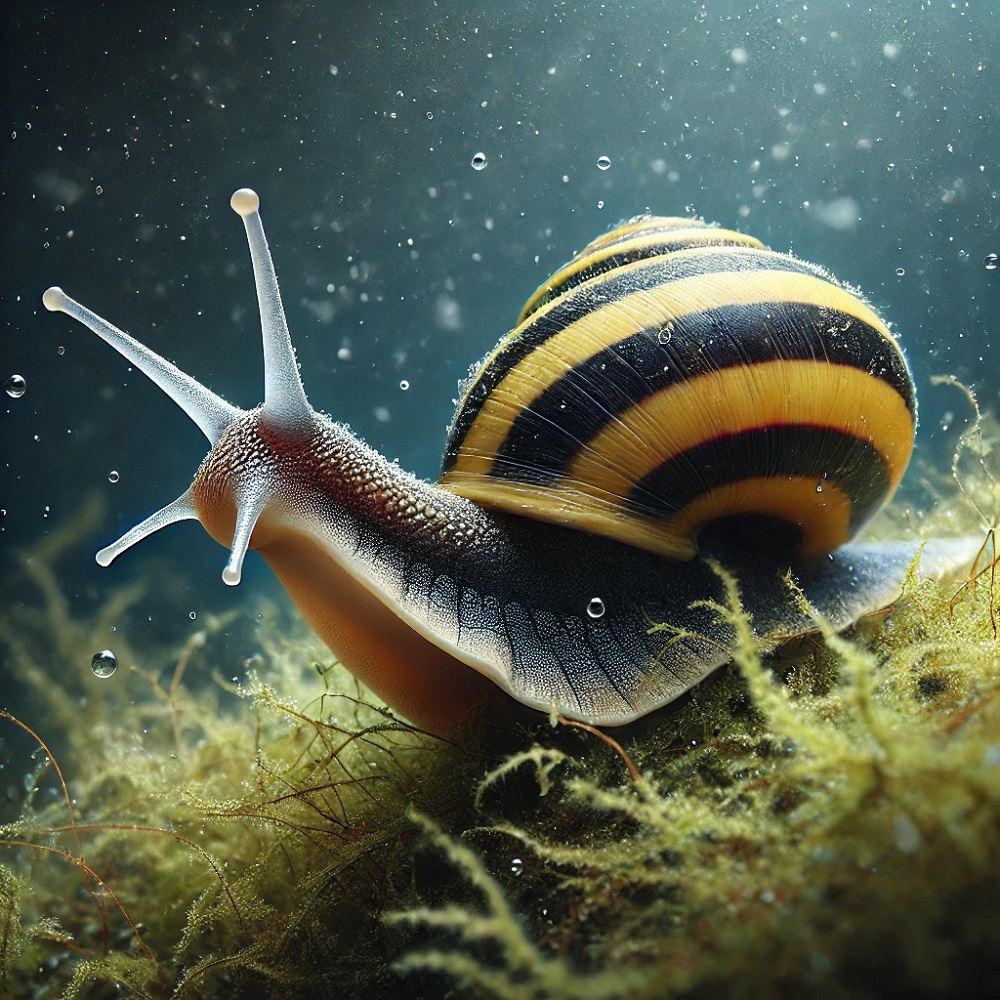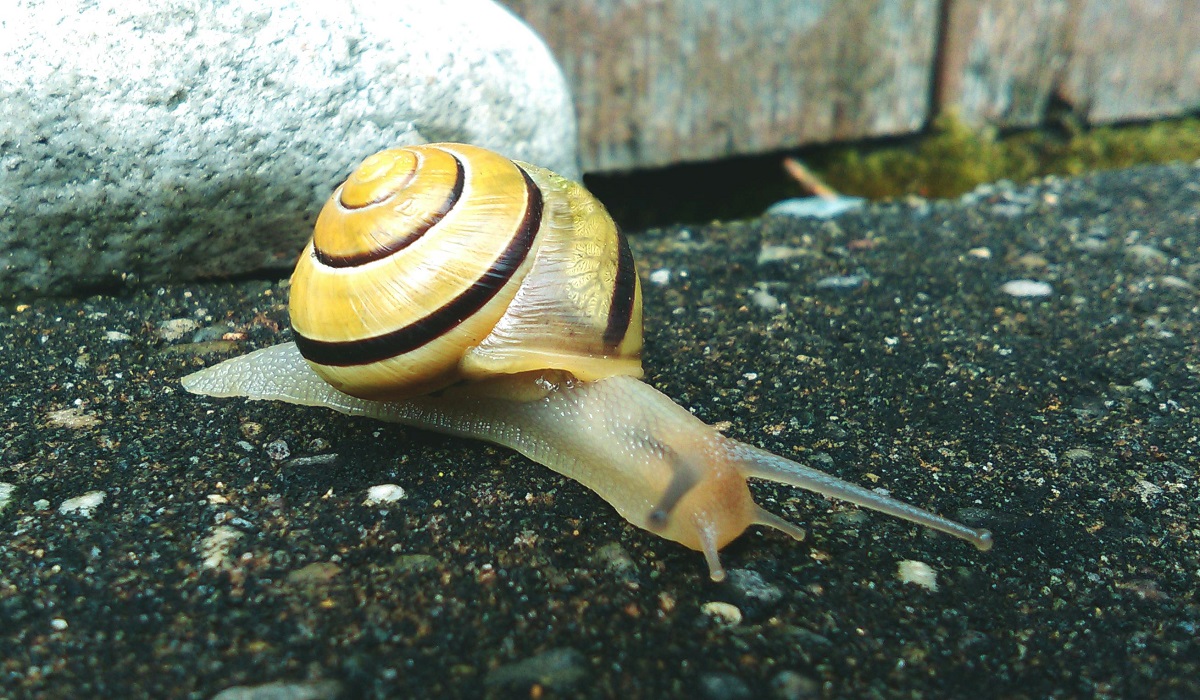When you think of snails, you might picture slow, harmless creatures that glide around your aquarium, eating algae and minding their own business. But not all snails are peaceful. Meet the Assassin Snail (Clea helena), a small but fascinating predator that can add excitement to your tank. This unique snail is not your average algae eater. It has a special job—hunting and eating other snails. In this article, we’ll explore everything you need to know about the Assassin Snail, from its appearance and behavior to its care and role in your aquarium.
What is an Assassin Snail?

| Category | Details |
|---|---|
| Common Name | Assassin Snail |
| Scientific Name | Clea helena (formerly Anentome helena) |
| Class | Gastropoda |
| Order | Neogastropoda |
| Family | Buccinidae |
| Origin | Southeast Asia (Thailand, Malaysia, Indonesia) |
| Habitat | Freshwater rivers, lakes, and streams |
| Size | Up to 1 inch (2.5 cm) in length |
| Lifespan | 2 to 3 years (in captivity) |
| Diet | Carnivorous (primarily eats other snails, also consumes protein-rich foods) |
| Temperament | Peaceful (but predatory toward other snails) |
| Tank Size | Minimum 5 gallons |
| Water Temperature | 70°F to 80°F (21°C to 27°C) |
| pH Level | 7.0 to 8.0 |
| Water Hardness | Moderate to hard |
| Substrate | Sandy or fine gravel (for burrowing) |
| Activity Level | Moderate (active hunter but moves slowly) |
| Breeding | Sexual reproduction (requires male and female) |
| Eggs | Small, square-shaped eggs laid on hard surfaces |
| Hatching Time | 2 to 4 weeks |
| Compatibility | Peaceful with fish and shrimp (may prey on baby shrimp or small snails) |
| Special Notes | Excellent for controlling pest snail populations; does not eat plants |
The Assassin Snail is a freshwater snail native to Southeast Asia. It is commonly found in rivers, lakes, and streams in Thailand, Malaysia, and Indonesia. Unlike most snails, the Assassin Snail is a carnivore. It gets its name from its hunting skills. It preys on other snails, making it a popular choice for aquarists who want to control snail populations in their tanks.
The Assassin Snail is small, usually growing to about 1 inch (2.5 cm) in length. Its cone-shaped shell with yellow and dark brown stripes gives it a striking appearance. The shell is not just for show—it provides protection from predators and helps the snail burrow into the substrate.
Why Do People Keep Assassin Snails?
Assassin Snails are popular for two main reasons: their unique behavior and their usefulness in controlling pest snails.
Pest Snail Control: Many aquarium owners struggle with pest snails like bladder snails or ramshorn snails. These snails reproduce quickly and can overrun a tank. Assassin Snails are natural predators that can help keep these populations in check. They hunt and eat other snails, making them a natural solution to pest problems.
Interesting Behavior: Assassin Snails are fascinating to watch. Unlike most snails, they are active hunters. They move slowly but deliberately, searching for their next meal. Watching an Assassin Snail hunt can be like watching a tiny underwater drama unfold.
How Do Assassin Snails Hunt?
Assassin Snails are stealthy predators. They use their keen sense of smell to locate their prey. Once they find a snail, they approach it slowly and carefully. When they get close enough, they extend a long, tube-like mouthpart called a proboscis. This proboscis contains a radula, a rough, tongue-like structure covered in tiny teeth.
The Assassin Snail uses its radula to scrape away at the prey’s shell. It can take hours or even days for the Assassin Snail to break through the shell. Once it does, it feeds on the soft tissue inside. After the meal, the Assassin Snail leaves behind an empty shell as evidence of its hunt.
What Do Assassin Snails Eat?
As carnivores, Assassin Snails primarily eat other snails. They prefer small snails like bladder snails, ramshorn snails, and Malaysian trumpet snails. However, they are not picky eaters. If snail populations are low, they will also eat other protein-rich foods, such as:
Bloodworms
Brine shrimp
Fish flakes or pellets
Sinking carnivore tablets
It’s important to note that Assassin Snails do not eat algae or plants. If you’re looking for a snail to clean your tank, this is not the right choice.
Are Assassin Snails Dangerous to Fish or Shrimp?
Assassin Snails are generally safe to keep with fish and shrimp. They are not aggressive toward larger tank mates. However, there are a few things to keep in mind:
Small Shrimp: While Assassin Snails usually ignore adult shrimp, they may prey on baby shrimp or very small species. If you have a shrimp tank, monitor the situation closely.
Slow-Moving Fish: Assassin Snails are not known to attack fish, but they may scavenge on dead or dying fish. If you have a sick or injured fish, it’s best to remove it from the tank.
Other Snails: If you have ornamental snails like nerite snails or mystery snails, be cautious. Assassin Snails may attack them if food is scarce.
How to Care for Assassin Snails
Assassin Snails are easy to care for, making them a good choice for both beginners and experienced aquarists. Here are some tips for keeping them healthy and happy:
Tank Size
Assassin Snails are small and don’t need a lot of space. A 5-gallon tank is sufficient for a small group. However, if you plan to keep them with other fish or shrimp, a larger tank is recommended.
Water Parameters
Assassin Snails are hardy and can adapt to a range of water conditions. Here are the ideal parameters:
Temperature: 70°F to 80°F (21°C to 27°C)
pH: 7.0 to 8.0
Hardness: Moderate to hard water
Regular water changes are important to keep the water clean and free of toxins.
Substrate
Assassin Snails love to burrow. A sandy or fine gravel substrate is ideal. It allows them to dig and hide, which is part of their natural behavior.
Tank Mates
Assassin Snails are peaceful and can live with most community fish. Good tank mates include:
- Small tetras
Guppies
Corydoras catfish
Shrimp (with caution)
Avoid keeping them with large, aggressive fish that might see them as food.
Feeding
If you have pest snails in your tank, the Assassin Snails will feed on them. If snail populations are low, you can supplement their diet with bloodworms, brine shrimp, or sinking pellets.
Breeding Assassin Snails
Assassin Snails are not as prolific as pest snails, but they can reproduce in home aquariums. They are gonochoristic, meaning they have separate male and female individuals. To breed, you need at least one male and one female.
Breeding usually happens when conditions are favorable. The female lays small, square-shaped eggs on hard surfaces like rocks or glass. The eggs hatch after a few weeks, and the baby snails start hunting almost immediately.
Common Myths About Assassin Snails
There are a few misconceptions about Assassin Snails that are worth clearing up:
They Will Completely Eliminate Pest Snails: While Assassin Snails are effective hunters, they may not completely eradicate pest snails. They help control the population but won’t eliminate it.
They Are Dangerous to Fish: Assassin Snails are not a threat to healthy fish. They are scavengers, not predators, when it comes to fish.
They Eat Plants: Assassin Snails are carnivores and do not eat plants. If you see them on plants, they are likely resting or searching for prey.

